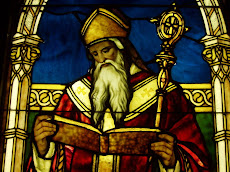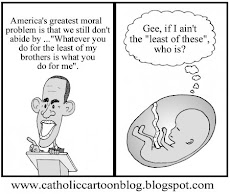In his extremely illuminating classic work, The Conservative Intellectual Movement in America Since 1945, (ISI, 1976, 3rd ed. 2008), George H. Nash picks up where Russell Kirk leaves off in his, The Conservative Mind: From Burke to Eliot, and traces the rise of the conservative movement in the post-war period up to the Reagan period.
In the post-WW II period, three distinct strands of thought came together to create the conservative movement that gradually grew and flourished until it climaxed with the election of a conservative president in 1980.
1. The first strand was the "classical liberals" or "libertarians," who opposed the threat of an ever-expanding State to individual liberty and private enterprise. They were convinced that America was drifting toward socialism and that this was primarily a failure of liberals to resist the collectivist temptation. F. A. Hayek (The Road to Serfdom) and Ludwig von Mises (Socialism) were immigrants of the Austrian school of economics, who opposed Kenysian theory and did much to reinvigorate classical, 19th century liberalism. Frank Chedorov was an example of a radical libertarian who stood in the tradition of Adam Smith, Henry Thoreau and Albert Jay Nock. It is interesting that, in his 1951 bombshell, God and Man at Yale, William F. Buckley used the term "Individualism" as the label for what he represented as over against "Collectivism."
2. The second strand was the "new conservatism" or "traditionalists" such as Richard Weaver (Ideas Have Consequences), Peter Viereck, Russell Kirk (The Conservative Mind) and Robert Nisbet (The Quest for Community). These men were critical of the 19th century, which had produced the horrifying disasters of 20th century totalitarianism and the secularized, rootless, mass society. They looked to European thought for inspiration (primarily Edmund Burke) and emphasized a return to ethical absolutes and a rejection of relativism, utilitarianism and pragmatism, which they saw as having corroded Western civilization and prepared the way for totalitarianism.
3. The third strand was the militant anti-Communism, shaped by people like Whittaker Chambers, (Witness), James Burnham, (The Managerial Revolution), and Frank Meyer (In Defense of Freedom: A Conservative Credo). These were all formerly men of the left who brought to the right the zeal of converts and first-hand understanding of the true mentality of Communism. This strand eventually was overshadowed by the larger-than-life figure of Senator Joseph McCarthy, who was a polarizing figure. No matter how much his methods and his personal style can be criticized, he was vindicated on the one, central point: that there actually was an infiltration by Communists of the American intelligence and government establishment. Even those who found McCarthy's methods distasteful, had to admit that Communism was a real, not an imaginary, threat.
These three strands of conservatism coalesced to form a coherent movement, which is not to say that they ever lost their distinctness or ceased to debate each other vigorously. They did unite in rejecting the atheistic, materialism of Ann Rand. Conservatives found that an atheistic, materialistic capitalism was no better than an atheistic, materialistic socialism. Rand's objectivism was seen as Nietzschean and as corrosive of the Western heritage as Marxism. So an outer limit was established to the embrace of capitalism.
The first two strands of the movement increasingly came into conflict in the 50's with the libertarians criticizing the traditionalists for being only too willing to utilize the coercive power of government to enforce virtue, which they saw as inimical to freedom. They also criticized the traditionalists of undervaluing reason and being too uncritical of tradition. After all, some of our ancestors were stupid and evil; surely we must make critical distinctions? From the other direction, the traditionalists accused the libertarians of simply being liberals and having no means of avoiding the degeneration of liberalism into statism and collectivism. They were afraid the process of decline that had happened in the late 19th century would simply happen again if the same classical liberal principles constituted the sum and substance of the conservative movement.
Frank Meyer was the man who laid the basis for a synthesis of the these two strands of conservatism and who enabled the movement to continue as a coherent entity rather than splitting into tiny, powerless, irrelevant cliques. Nash writes:
"What were the principles that comprised his attempted synthesis? 'Absolutely fundamental,' he argued, was 'the freedom of the person' - 'the central and primary end of political society,' 'the decisive concern of political action and political theory.' to Meyer, man was a 'rational, volitional, autonomous individual': freedom was 'of the essence of his being,' - indispensable, in fact, to his pursuit of virtue. Political order was to be judged according to its contribution to individual freedom. Moreover, the political sphere was sharply limited. The State had but three limited functions: national defense, preservation of domestic order, and the administration of justice between man and man. From this perspective Meyer proceeded to demolish the claims of those - collectivist liberals and new conservatives - who disparged the individual and his reason in the name of the State or 'community' or society. . . . There was no such independent entity as society, Meyer contended. . . . Society and the state were made for men, not men for them. . . . The 'achievement of virtue' was not a political question at all; it was none of the State's business. Freedom - uncoerced choice - was the absolutely indispensable condition of the pursuit of virtue. 'Unless men are free to be vicious they cannot be virtuous. No community can make them virtuous. Freedom was the ultimate political end; virtue was the ultimate end of man as man." (pp. 267-8)
This quote encapsulates the synthesis of classical liberalism and traditional conservatism that was embodied in the American founding - that conservative revolution. Meyer considered this to be the true heritage of the West "reason operating within tradition." (p. 269) Political freedom is a political goal, but freedom has a higher purpose than merely the satisfaction of momentary appetites by isolated individuals; it is actually instrumental. It is a pre-condition for true religious freedom and the virtuous life lived in civil society. The state is necessary, but dangerous if it becomes totalitarian in the sense of claiming to be capable of and authorized to shape all aspects of human life. The state is a mechanism of coercion and therefore not the appropriate mechanism for religion or the pursuit of virtue; hence the genius of the separation of church and state. But a certain view of limited government, the division of powers and free enterprise - which is expressed in the American but not the French or Russian Revolutions - is the necessary political pre-condition for the freedom that pursues virtue and thus allows man to be fulfilled in his being and achieve his earthly telos, which in part is a recognition that his ultimate telos is not merely earthly.
Subscribe to:
Post Comments (Atom)





No comments:
Post a Comment